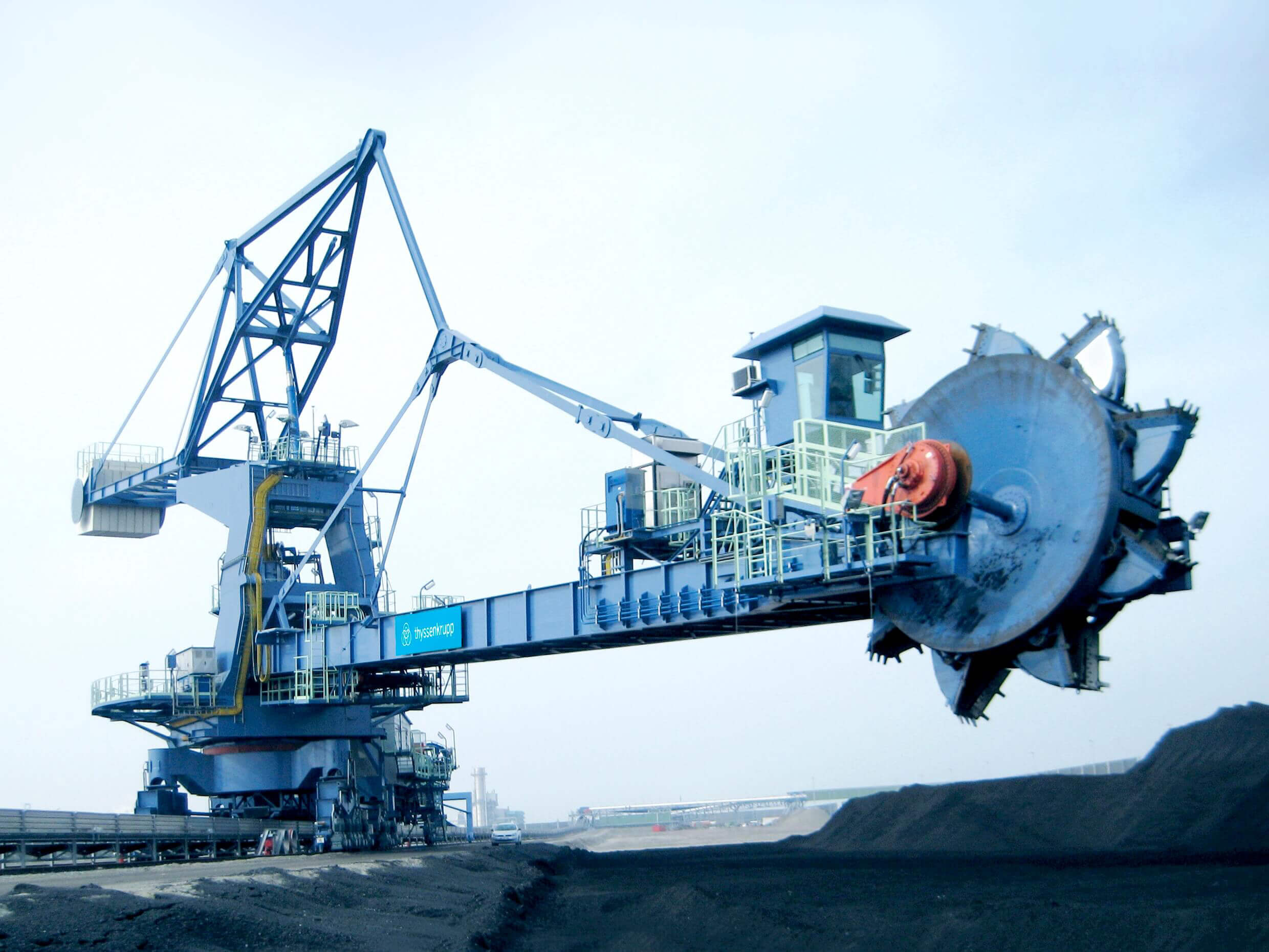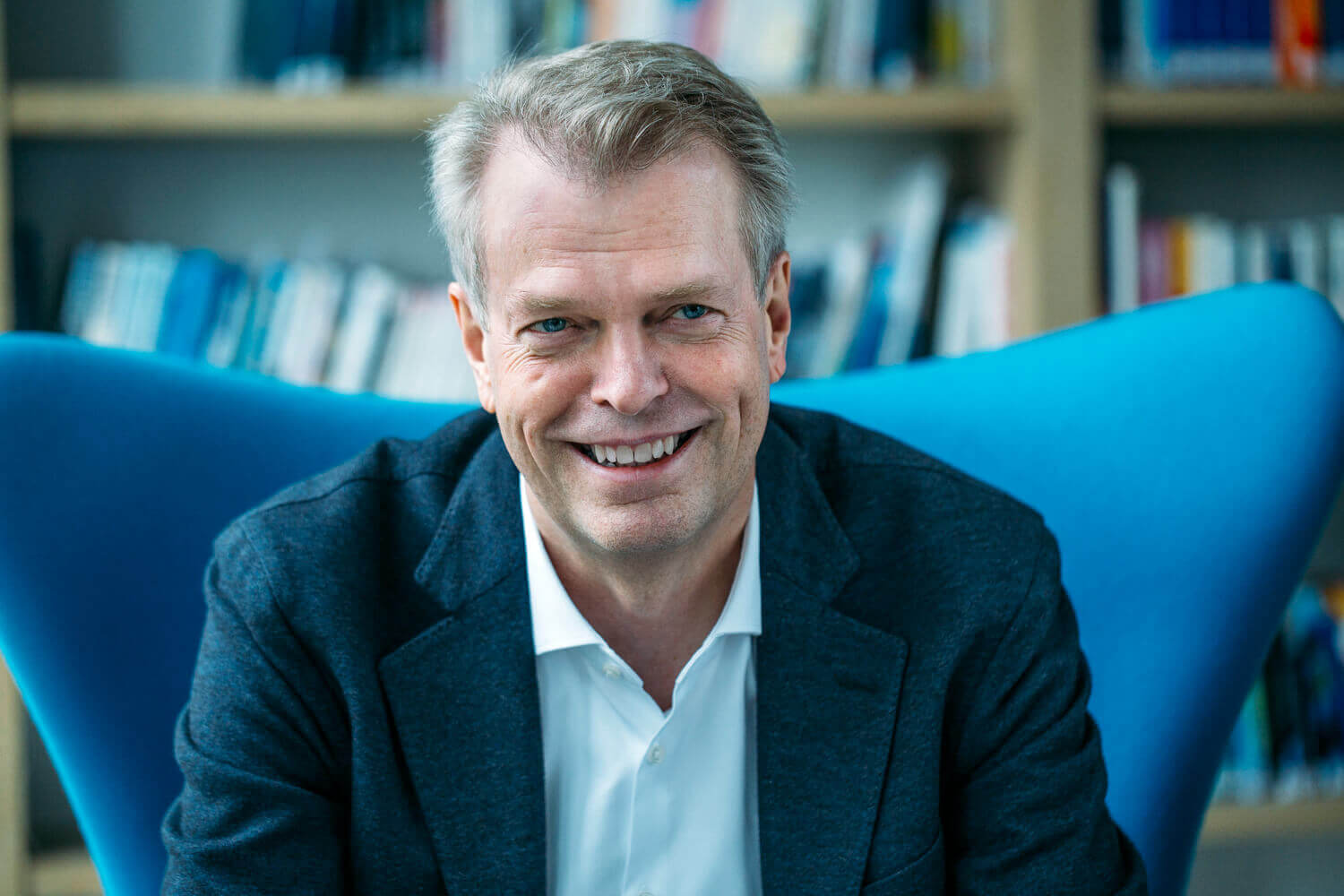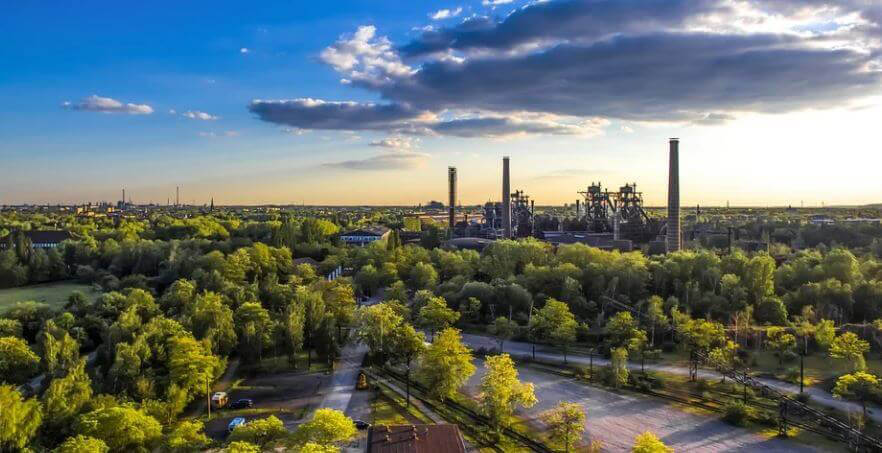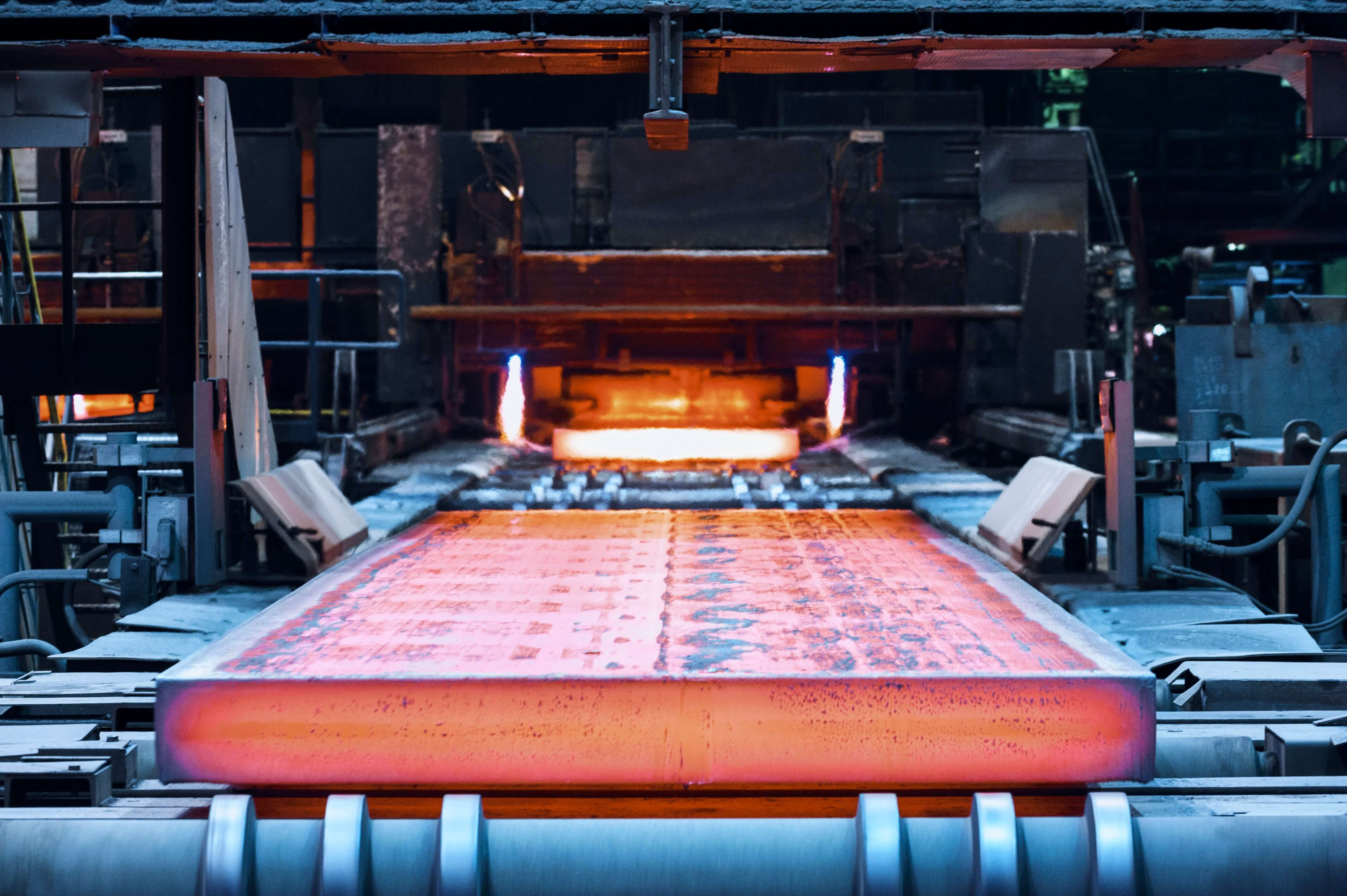History dating back to 1883
Hardly any other industrial group can boast such an eventful past as thyssenkrupp AG. Its historical roots unite almost the entire history of Rhenish-Westphalian heavy industry and thus the fundamental industrialization of Germany. The thyssenkrupp Group can trace its roots back to a large number of different predecessor companies which came together above all in the course of the consolidation of the coal, iron and steel industries. The entrepreneurial personalities of the founding companies played a major role in shaping German industrial policy in the 19th and early 20th centuries. They exerted a constant influence on German domestic and foreign policy.
The older history is worth reading about, spanning the first and second world wars and carried on by the entrepreneurial personality August Thyssen until his death on April 4, 1926. The predecessor companies of today's thyssenkrupp AG were influential pioneers for the rearmament policy of the National Socialists in the early 1930s. With the consolidated successor companies, a monostructured steel group was created after the war in the late 1960s in the form of August Thyssen-Hütte AG. In 1972 it already employed 92,200 people and generated annual sales of DM9.8 billion. The later Thyssen AG was thus based on a conglomerate of individual companies. To concentrate its activities, the Thyssen group defined core businesses in 1996 and later carried out a portfolio streamlining. Focusing on selected businesses with good market and earnings potential also served to internationalize the Group further. In its current structure, thyssenkrupp AG is a modern technology holding company.1

Thyssenkrupp AG was one of the 30 German stock corporations selected by the German stock exchange in 1987 to form the DAX, Germany's leading index. Numerous historic missteps in connection with the internationalization of steel production, especially in the USA and Brazil, brought the Group to the brink of collapse. These market developments, some of which were unforeseeable, subsequently led to several also very painful restructuring measures. As part of the portfolio optimization thyssenkrupp sold its steelmaking and processing plants in Brazil and the USA again in 2012. This resulted in a historic writedown of around EUR 9 billion. Effective September 23, 2019, Deutsche Börse resolved to relegate thyssenkrupp from the DAX to the MDAX. The thyssenkrupp Group has been through a long period of change. The share price fell by over 90% between 2006 and 2020, from EUR 45 to around EUR 4. But now, there are some approaches that could make an investment in the former steel giant interesting again.
Evolution to engineering "Made in Germany" completed
Today, anyone who calls thyssenkrupp AG a steel company only talks about 25% of the Group's output. That is because thyssenkrupp more closely resembles a technology holding company in its current setup. As part of the still ongoing reorganization process, the Group's organizational structure was divided into six business segments in October 2020: Materials Services, Industrial Components, Automotive Technology, Steel Europe, Marine Systems and Multi Tracks - a new stand-alone segment combining businesses for which thyssenkrupp is considering other ownership structures in the short to medium term. Marine Systems and the large-diameter bearings (Bearings) and forging businesses (Forged Technologies) combined in the Industrial Components segment are managed directly by thyssenkrupp AG as business units. thyssenkrupp brings together viable products and services under its strong umbrella brand, contributing to a better, more livable and sustainable future. In a broad ESG approach, the Company promises to work with its customers to develop new technologies and innovations as well as resource-saving solutions to meet the challenges of the future. The aim is to enable the efficient use of resources and produce consumer and industrial goods in a more environmentally friendly way.2
Restructuring bears fruit
The start to the new fiscal year 2021/22 (Sept. 30) was in line with expectations for thyssenkrupp, with a significant year-on-year improvement in order intake, sales and adjusted EBIT. In Material Services there was a significant increase in earnings and margins due to significantly higher product prices for stainless steel and nonferrous metals. By contrast, Industrial Components and Automotive Technology reported slightly lower sales due to weaker demand from abroad. On a comparable segment basis, sales increased by 39% to EUR 1.194 billion, and sales margin increased to 13.2% from 11.7%. Order intake in Marine Systems and Multi Tracks increased significantly, mainly due to major projects in the water electrolysis sector.
"For thyssenkrupp, hydrogen is the key technology for making our industry fit for the future and sustainable."
High energy prices and strained supply chains
Due to the sustained rise in energy and procurement costs, thyssenkrupp invested heavily in working capital in the final quarter. Free cash flow before M&A activities thus decreased by EUR 1.7 billion, but freely available liquidity remains high at EUR 8.3 billion. Delayed customer call-offs and continuing bottlenecks in the supply chains are currently necessitating major efforts in the warehousing of raw materials and intermediate products. This forward-looking approach also includes preparation for increased demand and high order intake. thyssenkrupp's efforts on the purchasing side put it in a position to continue producing for a certain time, even in the event of permanent supply chain disruptions.
Structural increase in production costs
Like every other industrial company, thyssenkrupp suffers from high raw material prices that cannot be passed on in full to customers in sales. In the meantime, in view of the explosion in energy prices, fears of a lack of profitability even prevail. Losses of exports from Ukraine and the halting of supplies from Russia by Severstal, for example, are causing a dramatic shortage of supply here. As steel production is still very energy-intensive by conventional standards, the rise in fossil fuel prices is having an extremely significant impact. However, in the previous quarter, thyssenkrupp profited from the recovery in the stainless steel business and improved project execution in plant construction.
Challenges, outlook, assessment
Against the background of the current economic conditions, including continuing armed conflicts, operating improvements are expected at thyssenkrupp due to the sustained change in underlying trends. This is based above all on structural improvements in the business areas. Uncertainties and limited reliable planning arise in particular in the more cyclical businesses with materials and components for cars and trucks. Here it would be crucial for the supply bottlenecks for intermediates, including semiconductors, to ease and for factor costs, such as energy, material and freight costs, which have recently risen very sharply, to return to normal levels. The volatility of raw material prices as well as the course of the pandemic in the past quarter are aggravating all planning processes. Overall, however, the economic risks from the Ukraine conflict outweigh the risks.

The outlook after the first quarter suggests a mid-single-digit percentage increase in sales and adjusted EBIT of between EUR 1.5 billion and EUR 1.8 billion. The establishment of dividend continuity is anchored as a further target. The next report for Q2 will be published on May 11, 2022.3
Digitalization and green technologies
A prerequisite and central component of digitized production processes is the continuous recording and analysis of key data. To this end, each part is labeled with a Data Matrix Code so that it can be clearly identified. The label accompanies the product on its entire journey through production to the customer. All production data is transmitted via the label - either completely automatically directly from the production facilities or manually.

Information, for example, on completed production steps or assembled additional components, and certain measurement data, is automatically forwarded to the "Manufacturing Execution System" (MES). It is a production management system that continuously collects information and controls and monitors production processes in real-time.
"The green transformation of industry is a task of decades."
In the context of green technologies, hydrogen has so far been seen as a beacon of hope for a sustainable industry. Yet there is another molecule that could become even more important than H2 in the short and medium term for achieving the energy transition. We are talking about NH3, ammonia, the secret star for CO2-free energy production. Today, about 80% of the 170 million tons of ammonia produced annually worldwide is used as a basic chemical for fertilizers. Only 20% is used for other technical solutions. However, in the coming years, demand for ammonia will shift dramatically toward new markets: power generation and transportation. That is because ammonia is the most cost-effective liquid energy source for long-term storage, easy to ship globally, and a viable marine fuel. To meet these future requirements and different markets, thyssenkrupp has already developed fully standardized and modularized green ammonia plant concepts. In combination with water electrolysis, these plants can even produce CO2-free "green ammonia." 4
Analysts expect a turnaround
The analysts surveyed by S&P Global Market Intelligence have a positive consensus opinion of thyssenkrupp AG. Out of 12 mentions, 10 are in the "buy/overweight" range with an average target price of EUR 14.65. Sales development from 2021 to 2023 is expected to be around EUR 34-35 billion, about 18% above 2020. The free cash flow reflects the increased investment in working capital (inventory build-up). The turnaround in earnings is reflected in the increase in earnings per share (EPS) from EUR -3.16 to EUR 1.46 per share in 2023. It may be expected that a dividend will be paid again from 2021/22.
| thyssenkrupp AG in Mio. EUR | 2020 | 2021e | 2022e | 2023e |
|---|---|---|---|---|
| Umsatzerlöse | 28.89 | 34.02 | 37.78 | 34.23 |
| Nettoverschuldung | -5.05 | -3.59 | -4.04 | -4.16 |
| EBITDA (bereinigt) | -400 | 1.719 | 2.835 | 2.369 |
| EBIT | -1.633 | 662 | 1.829 | 1.478 |
| Free Cashflow | -4.591 | -1.312 | 505 | 656 |
| Konzernergebnis | -1.958 | 231 | 1.099 | 888 |
| Ergebnis je Aktie (EPS) | -3,15 | 0,36 | 1,77 | 1,46 |
| Buchwert je Aktie (BVPS) | 15,76 | 16,71 | 18,46 | 19,18 |
**From a chart perspective, the share price should no longer fall below EUR 7.50 to underpin the positive turnaround of the past few weeks. If the conflict drags on for months or even intensifies, reduced growth forecasts will come into play in addition to supply chain constraints.

SWOT analysis
Strengths, Opportunities
- Very good positioning in steel and technologies in Europe
- Long-standing OEM partnerships in the development of new products
- New revenue streams in alternative energies & digitalization
- Pioneer in industrial hydrogen and ammonia production
- Restructuring and repositioning making good progress
Weaknesses, Threats
- High pension obligations
- Strong commitment of funds due to necessary stockpiling
- Sustained problems with supply chains
- Excessive raw material prices weigh on margins
- High dependence on fossil raw materials

Very well positioned in the medium term
With the transformation now almost complete, thyssenkrupp AG has completed its restructuring with flying colors. With the sale of the elevator business, the Company parted with a highly profitable unit, but the proceeds have ensured a gradual debt reduction. The balance sheet is much more robust in the event of stronger business fluctuations. In the medium term, thyssenkrupp is now in a position to finance promising in-house projects from cash flow and pay a dividend to shareholders again.
IPO of the hydrogen unit "nucera"
The focus on greater sustainability is an integral part of thyssenkrupp's strategy. thyssenkrupp nucera is a leading global supplier of green hydrogen. With its technology, the Company supports its customers on the road to climate neutrality and a decarbonized industry. With over 5 decades of project experience, more than 600 completed projects, 240,000 electrolysis cells produced and over 10 gigawatts of installed electrolysis capacity, the Company is a market leader in the chlor-alkali business. Alkaline water electrolysis, which produces green hydrogen on a large scale, is founded on this strong expertise. Using a standardized, modular approach, large volumes of hydrogen can be produced at a low cost.
Renewable energies are estimated to become the primary energy source for all market segments. With a clear strategic roadmap, thyssenkrupp nucera supports its industrial customers in the green transformation. To this end, the Company aims to expand its international presence and offer the technology to customers worldwide, reduce costs in the long term, and continue to work with strong, renowned partners such as the chemical plant engineering unit thyssenkrupp Uhde and joint venture partner De Nora. The spin-off by IPO is expected to be completed in mid-2022. This would add another GreenTech share to the German stock market.
Conclusion: With courage into the future
thyssenkrupp AG has implemented a nice strategic roadmap. Unfortunately, the stock markets experienced a massive correction just as TKA shares broke out. The investments in defense capabilities announced by the German government as a result of the armed conflicts could lead to order growth at thyssenkrupp both in Marine Systems and in other groups. **The stock's current price level of around EUR 8 must be regarded as favorable given the medium-term prospects.

